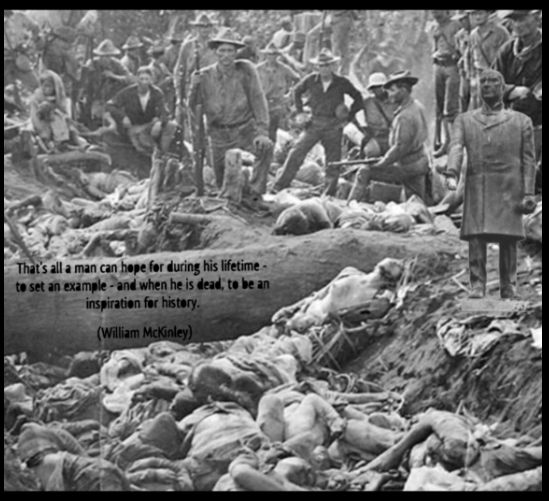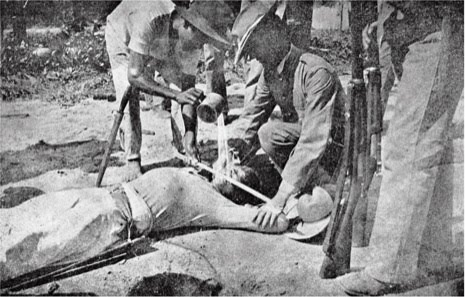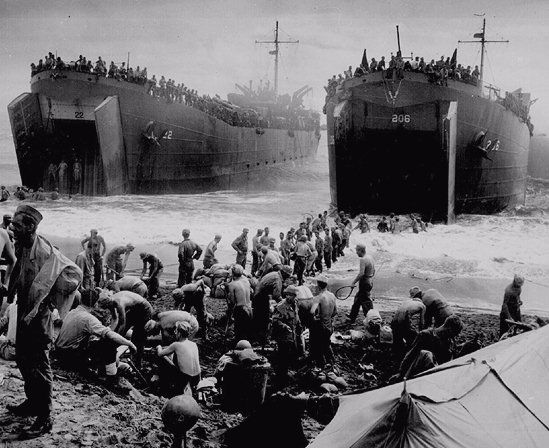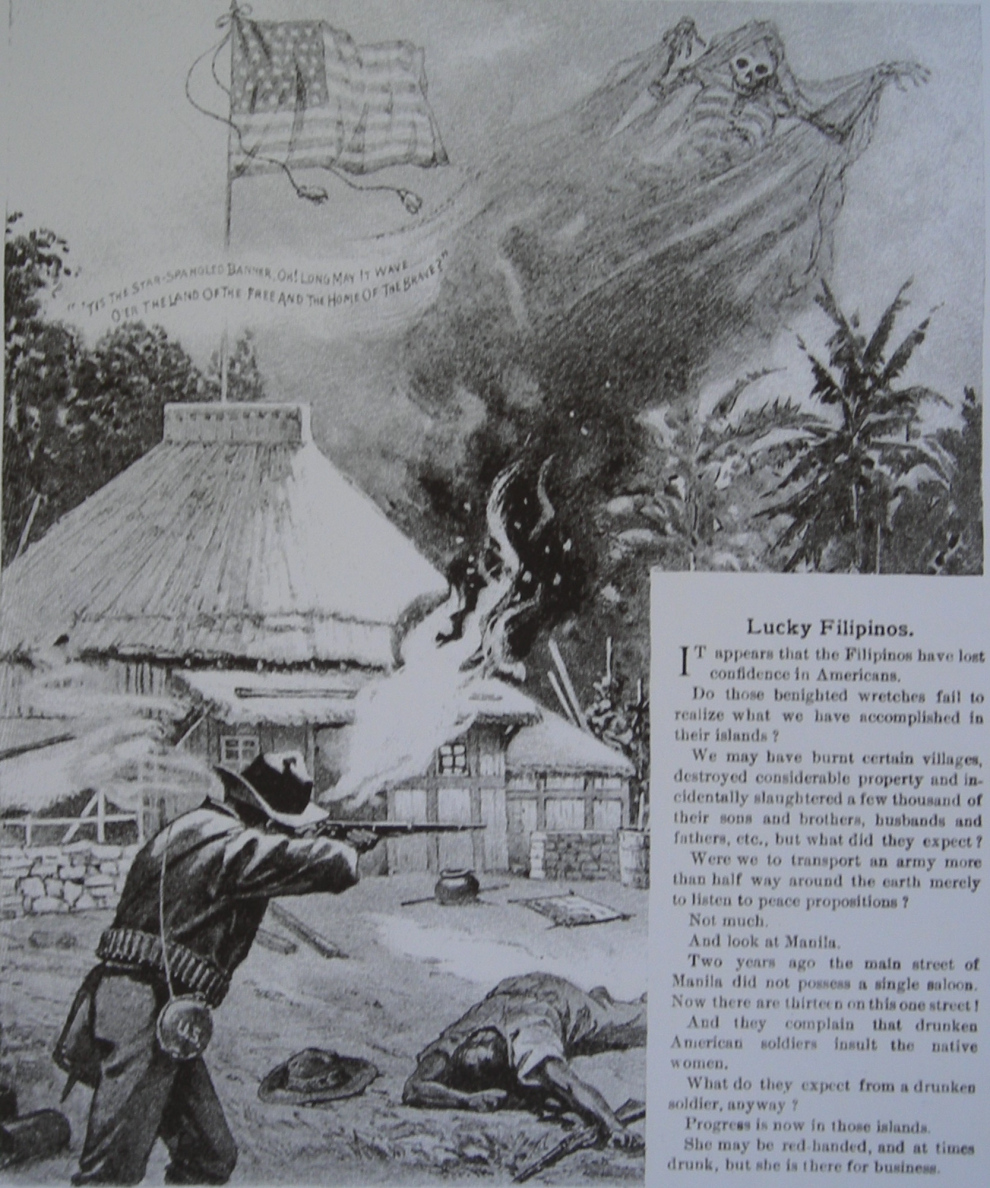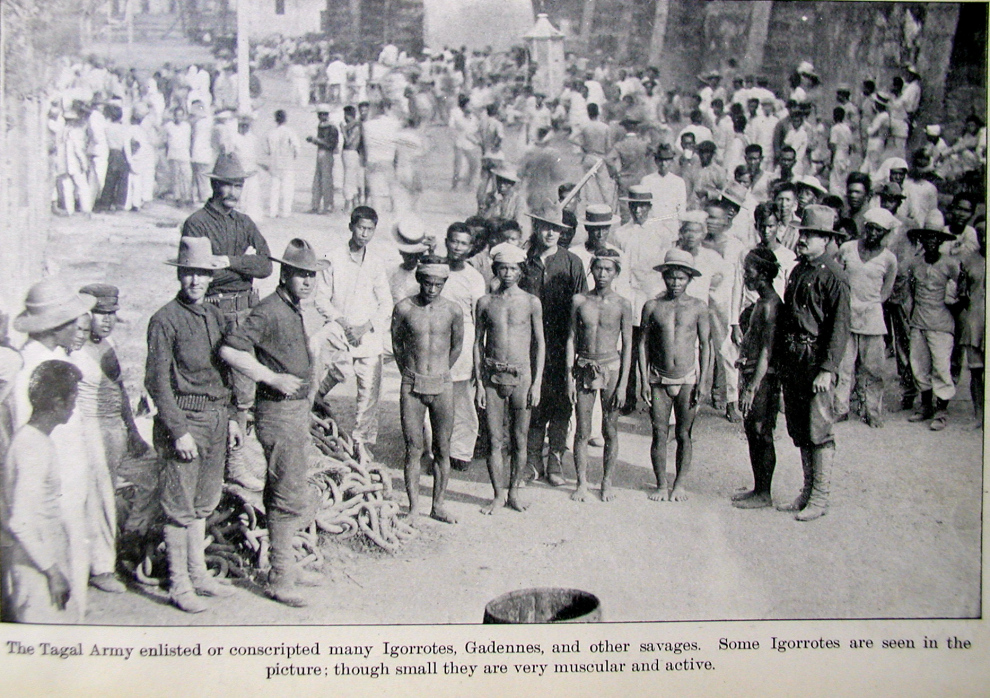MCKINLEY’S LEGACY OF PAIN
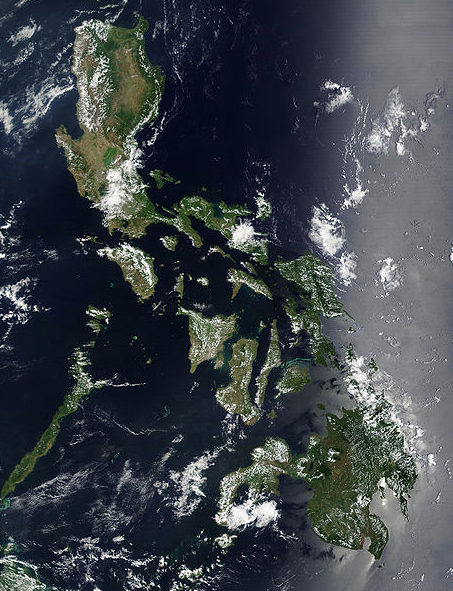
McKinley’s war against the Indigenous Peoples of the Philippines began February 4, 1899 and so protracted was the resistance by the Filipinos that even after the official “end” to the war in 1902 (following, but not related to, McKinley’s assassination) the US passed specific separate acts shifting authority from the military to civilians, officially “ending” the war in these regions in a silent, piecemeal fashion by 1913. Source
ASSIMILATION
McKinley’s policy of benevolent assimilation leaves upwards of 1 million humans dead Source.
The war started because a December 1898 treaty signed with Spain “gave” the U.S. possession of Puerto Rico and the Philippines, the latter envisioned as the passageway to the limitless markets of the far east. Of the decision to seize the territory, McKinley would say-
“…they are unfit for self-government-and they would soon have anarchy and misrule over there worse than Spain’s wars; and 4) that there was nothing left for us to do but to take them all, and to educate the Filipinos, and uplift and civilize and Christianize them, and by God’s grace do the very best we could by them, as our fellow-men for whom Christ also died.”
William McKinley speaking about the Philippines in January 1903. Source.
The impetus for McKinley’s war was a deadly mixture of racist condescension, commercialism, nationalism, and religion, all important ingredients of Manifest Destiny. It was sparked after successfully defeating the Spanish who had previously occupied the area, and war raged as the Filipinos, initially thinking the U.S. had come to free them from the Spanish, realized the U.S intended to take everything.
Unsurprisingly, McKinley portrayed it as the exact opposite:
“They will not be governed as vassals or serfs or slaves. They will be given a government of liberty, regulated by law, honestly administered without oppressing exaction, taxation without tyranny, justice without a bribe, education without distinction of social conditions, freedom of religious worship, and protection of life, liberty, and
McKinley’s address at Minneapolis, Minnesota, October 12, 1899. Source.the pursuit of happiness”
Above: “That’s all a man can hope for during his lifetime – to set an example – and when he is dead, to be an inspiration for history.” -William McKinley Source
Above: The bodies of Moro insurgents and civilians killed by McKinley’s U.S. troops during the Battle of Bud Dajo in the Philippines, March 7, 1906. According to one account, U.S. troops massacred at least 600 men, women, and children in this one battle. Corpses were piled five deep, and many of the bodies were wounded multiple times. Photo from The National Archive. Photo overlaid with an image of Arcata’s celebrated McKinley Statue. Source. Ironically, Professor Emeritus Louis Gould would one day record “Nancy Allison McKinley, his devoutly religious mother, taught him the value of prayer, courtesy, and honesty in all dealings.” Source.
Later, as the war raged and McKinley’s second election approached, it became understood that the US military needed to increase it’s efforts so that the war would not hamper McKinley’s elections prospects. A “peace at any price policy was inaugurated to meet the exigency of Mr. McKinley’s campaign for presidency in 1900” Source.
McKinley’s skill for political manipulation has even been admired by former chief Bush campaign strategist Karl Rove. This is the same Karl Rove who referred to the Indian Island massacre of the Wiyot people as “alleged”. In his article, Karl Rove displays, quite perfectly, not just a profound (and instantly discrediting) disregard for already-established facts, but an all to common refusal to acknowledge that the embodiment of the ideas of Manifest Destiny, settler-colonialism, greed, and racism has come in many forms throughout time and this is exactly what led to events in and around Humboldt County. In the heart of
Karl Rove referred to the Wiyot Massacre as “alleged”. He is a great admirer of McKinley. Source
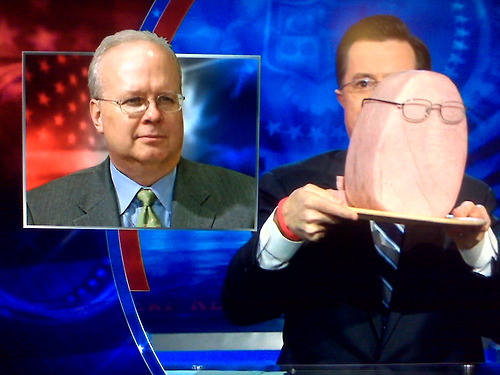
Above: Stephen Colbert compares Karl Rover to ham.
RACISM
It was a time of intense racism in the United States. In the years between 1889 and 1903, on the average, every week, two Black people were lynched by mobs — hanged, burned, mutilated. According to Howard Zinn The Filipinos were brown-skinned, physically identifiable, strange-speaking and strange-looking to Americans. To the usual indiscriminate brutality of war was thus added the factor of racial hostility. Source.
Former NBC journalist Stanley Karnow detailed the atrocities in his 1989 book, In Our Image. Foreshadowing U.S. military terrorism decades later in Vietnam, El Salvador, Guatemala, Chile, and Colombia, U.S. soldiers in the Philippines raped “g**k” women, threw “******” infants in the air and bayoneted them, summarily executed “monkey” prisoners and “goo-goo” elders on bridges and let their corpses float downriver to terrorize the population, burned entire villages to enforce mass relocations and to control food supplies, and crowded people into jails so tightly they couldn’t sit down. Source.
Further examples are plentiful:
“The Major said that General Smith instructed him to kill and burn, and said that the more he killed and burned the better pleased he would be; that it was no time to take prisoners, and that he was to make Samar a howling wilderness. Major Waller asked General Smith to define the age limit for killing, and he replied “Everything over ten.”
-Testimony of Littletown Waller, Marine. Source.
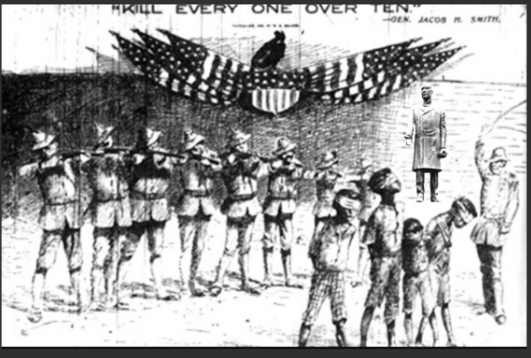
From the boots on the ground to the men in power,
A New York-born soldier – “The town of Titatia [sic] was surrendered to us a few days ago, and two companies occupy the same. Last night one of our boys was found shot and his stomach cut open. Immediately orders were received from General Wheaton to burn the town and kill every native in sight; which was done to a finish. About 1,000 men, women, and children were reported killed. I am probably growing hard-hearted, for I am in my glory when I can sight my gun on some dark skin and pull the trigger.” Source.
Albert Sonnichsen wrote in his memoir of the “heaps of dead and dying natives… photographed by our people, and exhibited with such mottoes as: ‘Can the __d Regiment boys shoot? You bet they can. Count the dead n*****s.’” Source.
“Our troops in the Philippines… look upon all Filipinos as of one race and condition,” wrote Henry Loomis Nelson of Harpers Magazine, “and being dark men, they are, therefore ‘n*****s,’ and entitled to all the contempt and harsh treatment administered by white overlords to the most inferior races.” Source.
Get the good old syringe boys and fill it to the brim
We’ve caught another n****r and we’ll operate on him
Let someone take the handle who can work it with a vim
Shouting the battle cry of freedom
Chorus
Hurrah Hurrah We bring the Jubilee
Hurrah Hurrah The flag that makes him freeShove in the
nozzel [sic] deep and let him taste of libertyShouting the battle cry of freedom. [93]
Albert Gardner, in Troop B of the 1st U.S. Cavalry, composed a would-be comic song dedicated to “water-cure” torture—in which filthy water was poured into the mouths of Filipino prisoners, drowning them–sung to the tune of the Battle Hymn of the Republic: Source
“Hitler’s concept of concentration camps, as well as the practicality of genocide, owed much, so he claimed, to his studies of English and United States history,” Toland wrote in his book, Adolf Hitler: The Definitive Biography. “He admired the camps for Boer prisoners in South Africa and for the Indians in the wild west, and often praised to his inner circle the efficiency of America’s extermination—by starvation and uneven combat—of the red savages who could not be tamed by captivity.”
Source
The Pacific is our ocean. . . . Where shall we turn for consumers of our surplus? Geography answers the question. China is our natural customer. . . . The Philippines give us a base at the door of all the East. . . . No land in America surpasses in fertility the plains and valleys of Luzon. Rice and coffee, sugar and cocoanuts, hemp and tobacco. . . . The wood of the Philippines can supply the furniture of the world for a century to come. At
-Senator Albert Beveridge spoke, January 9, 1900. Source.Cebu thebest informed man on the island told me that 40 miles of Cebu’s mountain chainare practically mountains of coal. . . . I have a nugget of pure gold picked up in its present form on the banks of a Philippine creek. . . . My own belief is that there are not 100 men among them who comprehend what Anglo-Saxon self-government even means, and there are over 5,000,000 people to be governed. It has been charged that our conduct of the war has been cruel. Senators, it has been the reverse. . . . Senators must remember that we are not dealing with Americans or Europeans. We are dealing with Orientals.
McKinley’s employed wartime propaganda extolling national progress and unity, winning support for far-reaching changes in foreign policy by explaining overseas expansion in terms of American traditions and drew on familiar themes from the past. He portrayed American expansion in the Pacific as a continuation of manifest destiny and compared the Filipinos to Native Americans, calling them savage warriors or “little brown brothers.” Appealing to popular attitudes of the times, he encouraged Americans to fulfill their manly duty to spread Christian civilization. The United States, he asserted, was a liberator, not a conqueror. Source.
In order to successfully manipulate the public with masterfully timed and blended facts, lies, ideas, patriotic symbols, and emotional appeals, McKinley and his administration mastered the latest communication technology to shape the portrayal of the war by the media of the day.
DEATH TOLL
The total number of Filipino who died remains a matter of debate. Most modern sources cite a figure of 200,000 to 1,500,000 total Filipino civilians dead with most losses attributable to assault, violence, and disease. In 1908 Manuel Arellano Remondo, in General Geography of the Philippine Islands, wrote: “The population decreased due to the wars, in the five-year period from 1895 to 1900, since, at the start of the first insurrection, the population was estimated at 9,000,000, and at present (1908), the inhabitants of the Archipelago do not exceed 8,000,000 in number.” Rummel estimates that at least 16,000~20,000 Filipino soldiers and 34,000 civilians were killed, with up to an additional 200,000 civilian deaths, mostly from a cholera epidemic.
The history of the Philippines is complex and beyond the scope of this project. This video can help provide an important overview of the legacy McKinley ushered in and the ideals that perpetuate and worsen it. (Refresh your browser if you do not see it below).

